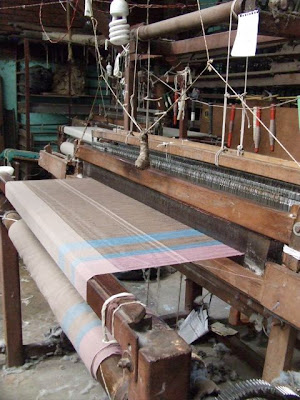Hiromi's latest natural dye experiment is with black cherries that were harvested earlier in the year and kept frozen.
The natural fibre materials used in this experiment are pictured in the photo below, they are a silk handkercheif, felted wool, hempcotton blended yarn and hempwool blended yarn.
Like all the other dyestuffs she uses, the cherries were boiled up to extract as much colour as possible and also with just enough water to stop the dyestuff from burning. If dyeing anything in volume, plenty of water would have been more suitable to create the dyebath.
You will notice that the cherry stones haven't been removed prior to boiling, this was unintentional! We recommend the removal of the stones as it will make it easier to break up the cherries while boiling them, but allowing the stones to boil with the fruit colours them nicely if you intend to use them for beads.
The image below shows the final results from the dyeing experiment. The background is the silk handkerchief that has been tie-dyed and of the two yarns, hempwool is on the left and hempcotton is on the right. The hempcotton seems to have taken less colour, probably due to both hemp and cotton being cellulose fibres. The protein fibres of wool and silk always seem to beautifully take natural dye colours.
One point that we would like to mention is that dyes from blackberries and elderberries are generally considered as stains rather than dyes as even with the use of fixative, the colour's longevity in limited. We think cherries may be similar in this respect.
For information about other dyestuffs that we have experimented with, click on any of the links below to be taken to the corresponding blog entry.
















































